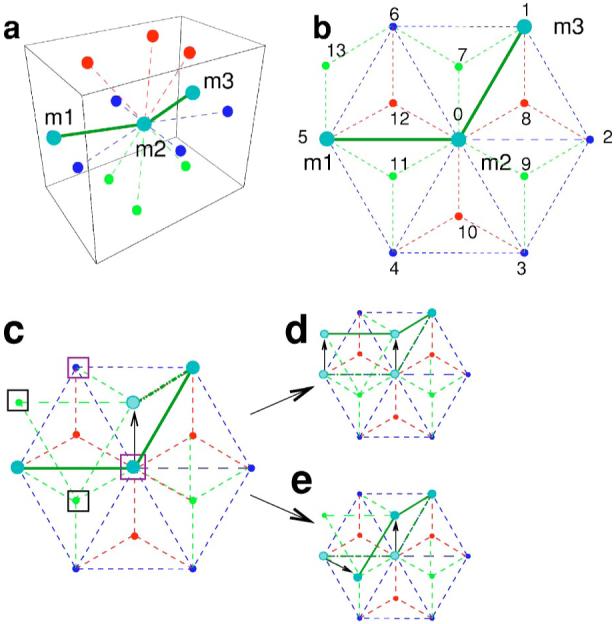FIG. 4.

(Color online) Chain motion on the lattice. In the panels, different colors indicate the different planes to which the sites belong: Blue for the central plane, red for the plane above, and green for the plane below. We label the central site “0” and we number the twelve neighboring sites from 1 to 12. Site “13” is an example of a next nearest neighbor of the central site “0” that is a nearest neighbor of sites “5” and “6.” (a) Initial configuration of a polymer chain comprising three monomers (m1,m2,m3) sitting on the nodes of a three-dimensional lattice. To illustrate our algorithm for the motion of the chain, we consider the motion of the monomer m2. (b) Projection onto the central plane of the polymer configuration and the neighboring lattice sites. The color code is the same as in (a). Monomer m2 can move with equal probability to any of the ten empty neighboring sites. (c) m2 moves to site “7” (indicated by the black arrow). This site is a nearest neighbor of site “1” in which m3 sits, but it is not a nearest neighbor of site “5” which is occupied by m1. Since consecutive monomers in the polymer chain must occupy neighboring sites in the lattice, m1 must “reptate,” i.e., it must move to a neighboring site which is also a neighbor of site “7.” These are sites {“0,” “6,” “11,” “13”} indicated by boxes. Purple boxes show sites which cannot be occupied {“0,” “6”}, because the final configuration would violate stiffness constraints. Black boxes indicate acceptable sites {“11,” “13”}. With equal probability, monomer m1 can move to either of the two acceptable sites. The two possible final configurations are shown in panels (e) and (d).
